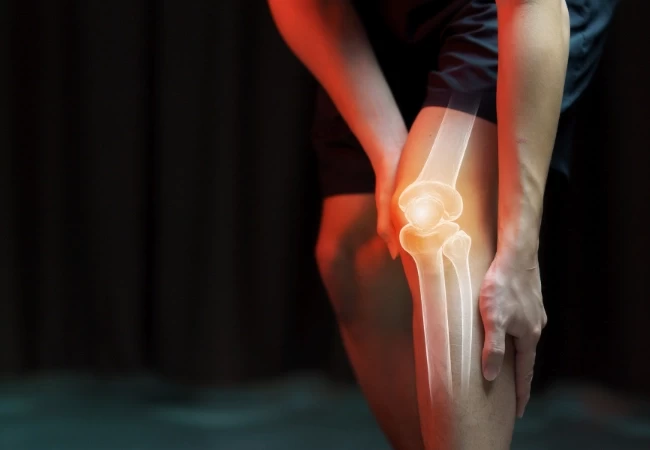Joint Replacement Surgery

Joint Replacement Surgery
Joint replacement surgery is a life-changing procedure that helps individuals suffering from severe joint pain due to arthritis, injury, or other degenerative conditions regain mobility and improve their quality of life. Whether you’re dealing with knee, hip, or shoulder pain, joint replacement can offer long-term relief. In this comprehensive guide, we’ll cover what joint replacement surgery is, its benefits, the types of surgeries, recovery, and more.
Joint replacement surgery is a transformative procedure designed to alleviate chronic joint pain caused by arthritis, injury, or degenerative diseases. Whether you are suffering from knee, hip, shoulder, or other joint pain, joint replacement surgery can restore your ability to move freely and comfortably.
What is Joint Replacement Surgery?
Joint replacement surgery involves removing a damaged or worn-out joint and replacing it with a prosthetic (artificial) joint. The procedure is commonly performed on weight-bearing joints, including the knee, hip, and shoulder, to reduce pain, improve joint function, and enhance mobility.
This surgery is typically considered when non-surgical treatments such as physical therapy, medications, or injections fail to provide relief, and the pain affects daily activities and quality of life.
Why Do You Need Joint Replacement Surgery?
People often consider joint replacement surgery when they experience chronic pain and reduced function due to conditions such as:
- Osteoarthritis: The most common cause of joint degeneration, where the cartilage protecting the joint wears away, causing pain and stiffness.
- Rheumatoid Arthritis: An autoimmune condition where the body’s immune system attacks the joint lining, leading to inflammation and damage.
- Post-Traumatic Arthritis: This can develop after a joint injury or fracture, causing long-term pain and stiffness.
- Avascular Necrosis: When blood supply to the joint is interrupted, leading to bone death and joint collapse.
- Joint Deformities: Congenital or acquired deformities that affect joint alignment and function.
Types of Joint Replacement Surgery
The most common types of a joint replacement surgeries include:
- Knee Replacement Surgery (Knee Arthroplasty): This procedure replaces the damaged knee joint with a prosthetic made of metal, plastic, or ceramic components. It is typically recommended for people suffering from severe knee arthritis or joint deterioration.
- Hip Replacement Surgery (Hip Arthroplasty): Involves replacing the hip joint with an artificial one made of metal, ceramic, and plastic. This surgery helps relieve hip pain caused by conditions like osteoarthritis, fractures, or avascular necrosis.
- Shoulder Replacement Surgery: Involves replacing the shoulder joint with a prosthesis to alleviate pain and improve motion. It is often performed in cases of shoulder arthritis or rotator cuff tears.
- Elbow Replacement Surgery: Though less common, elbow replacement surgery is an option for those suffering from severe pain or loss of function due to arthritis or injury.
Benefits of Joint Replacement Surgery
The decision to undergo joint replacement surgery is often life-changing and offers numerous benefits, including:
- Pain Relief: The most significant benefit is the reduction or elimination of chronic joint pain, allowing individuals to live more comfortably.
- Improved Mobility and Function: After recovery, many patients experience improved joint function and greater ease of movement.
- Enhanced Quality of Life: Joint replacement allows people to return to everyday activities like walking, climbing stairs, and exercising.
- Durability: Modern prosthetic joints are designed to last for many years, providing long-term relief from joint pain.
What to Expect During Joint Replacement Surgery
Joint replacement surgery is a carefully planned procedure that generally follows these steps:
- Pre-Surgery Consultation: A thorough evaluation, including medical history, physical examination, and diagnostic tests (X-rays, MRIs) to assess the joint’s condition.
- Anesthesia: The surgery is typically performed under general anesthesia or regional anesthesia (such as a spinal block) to ensure the patient is comfortable and pain-free.
- Surgical Procedure: The damaged joint is removed, and a prosthetic joint is carefully placed. Depending on the joint, the surgery can last between 1-3 hours.
- Post-Surgery Care: After the surgery, patients are monitored closely and given pain medications to manage discomfort. A physical therapy plan will begin shortly after the procedure to promote healing and restore function.
Risks and Considerations of Joint Replacement Surgery
While joint replacement surgery is generally safe and effective, like any surgery, it comes with some risks, such as:
- Infection: As with any surgery, there is a risk of infection at the surgical site.
- Blood Clots: After surgery, blood clots may form, especially in the legs, so medications or exercises to prevent clotting are commonly recommended.
- Implant Problems: Although rare, the prosthetic joint can loosen or wear out over time, requiring further treatment or revision surgery.
- Nerve Damage: In some cases, nearby nerves can be affected during the surgery, causing numbness or weakness.
Conclusion
If joint pain is limiting your daily activities and quality of life, joint replacement surgery can offer a long-term solution for improved mobility and pain relief. With advancements in surgical techniques and prosthetic technology, the procedure has become safer and more effective than ever before.
